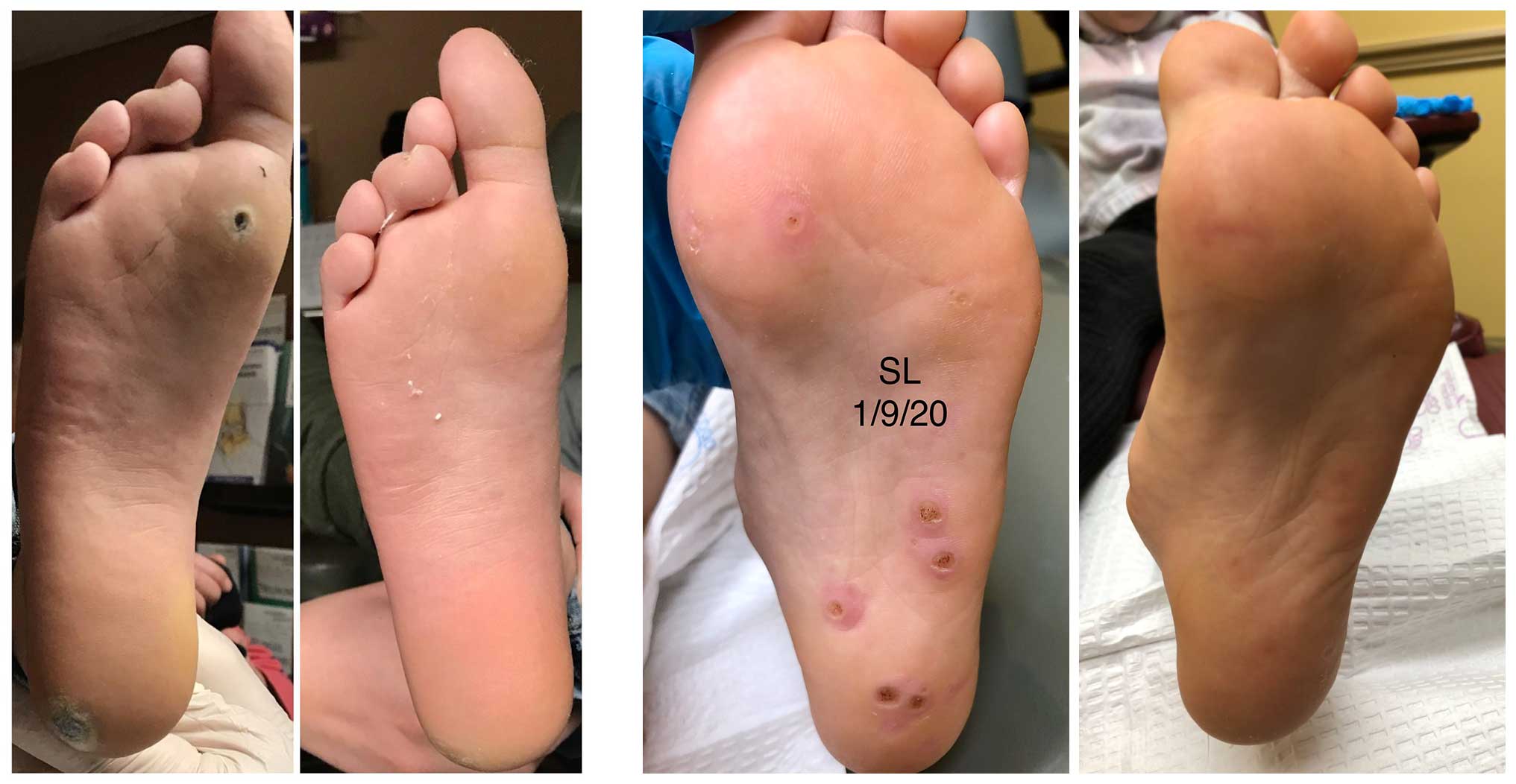Growths on the skin like small, firm bumps caused by the human papillomavirus (HPV) infection are called warts. They can affect any area of the body. They can often be seen around the fingernails, on the face, near the knees. Warts don’t usually hurt, but the ones on the soles of feet can cause much pain. One of the effective treatments for plantar warts is the Swift wart therapy or the Swift wart treatment. Read further to know all about this therapy, including the different types of warts.

What are the types of warts?
Every type of wart looks distinct and appears on various parts of the body. Below listed are the five different types of warts.
- Common warts: Generally, common warts grow on fingers, knees, toes, elbows and hands. They are a small, rugged, greyish-brown bump that looks like a dome. They have a grainy and rough appearance with a rounded top that looks like a cauliflower. There are black dots on the round top.
- Plantar warts: Plantar warts grow on the bottom of the feet and are surrounded by hardened skin. They can be very uncomfortable, and you may feel like you are walking on a tiny stone. They grow into your skin, unlike any other warts.
- Flat warts: Flat warts grow on the arms, thighs and face. They are small, and you may not be able to notice them immediately. They are smoother than any other warts with a flat top. They appear to be slightly yellow, brown or pink. Many children get them on their faces more than any other part of the body. They usually appear in clusters and are grown anywhere.
- Filiform warts: Filiform warts can grow on your nose or mouth. They can also grow on your neck and under your chin. Their shape looks like a finger, and their colour is similar to the skin of a human.
- Periungual warts: Periungual warts are usually painful and affect the growth of the nails since they grow around and under the fingernails and toenails.
What is the Swift wart treatment?
As mentioned earlier, Swift wart therapy is the most effective treatment in removing plantar warts. It is a cutting-edge technology, which is approved by the Food and Drug Administration (FDA). This technology addresses and targets the roots of the plantar warts problem through a probe by sending low-dose microwave energy. This energy allows the immune system to attack the HPV virus and eradicate the wart.
What are the treatment plans of the Swift wart treatment?
Generally, many podiatrists treat patients with the Swift technology, which requires approximately three visits and doesn’t take longer than 5 minutes. The treatment must be taken at a four-week interval to match the immune cycle of a body. When your immune system begins working between the visits, warts tend to shrink slowly. The Swift technology doesn’t break the skin’s surface. After each session, you won’t require any bandages.
Is Swift therapy painful?
During the treatment, you can experience minor discomfort or even pain. Although the pain differs from person to person, many describe the pain as a needle prick. You can ensure that the pain subsides within 1 to 2 seconds and disappears completely. Some patients may experience slight discomfort or tingling sensation for 24 hours, which is very rare.
The Swift wart therapy is beneficial to those who have stubborn warts on their hands and feet. But it is recommended to talk to your podiatrist if you are pregnant or breastfeeding and have poor peripheral circulation, immune suppression or poor healing capacity.
